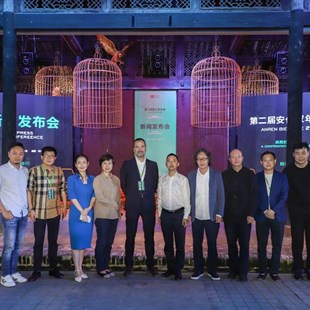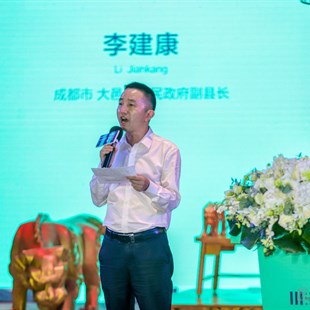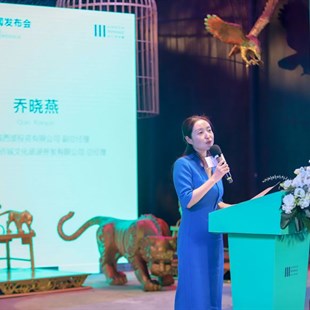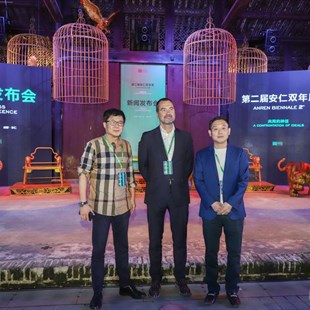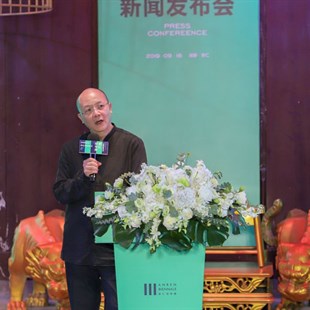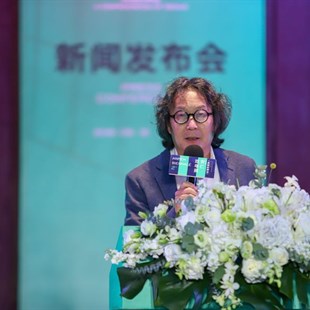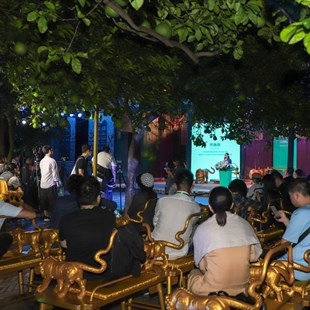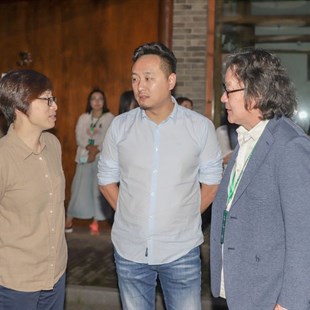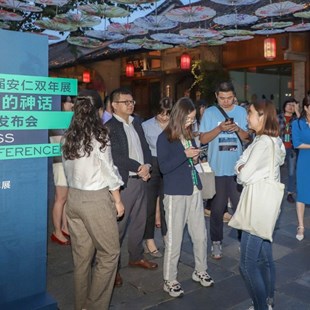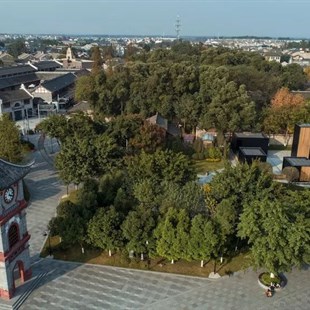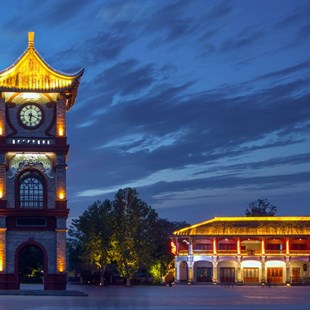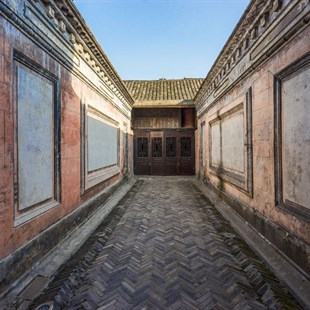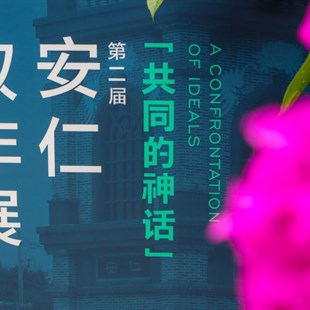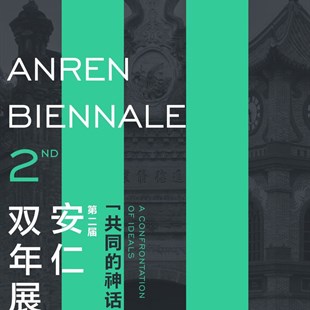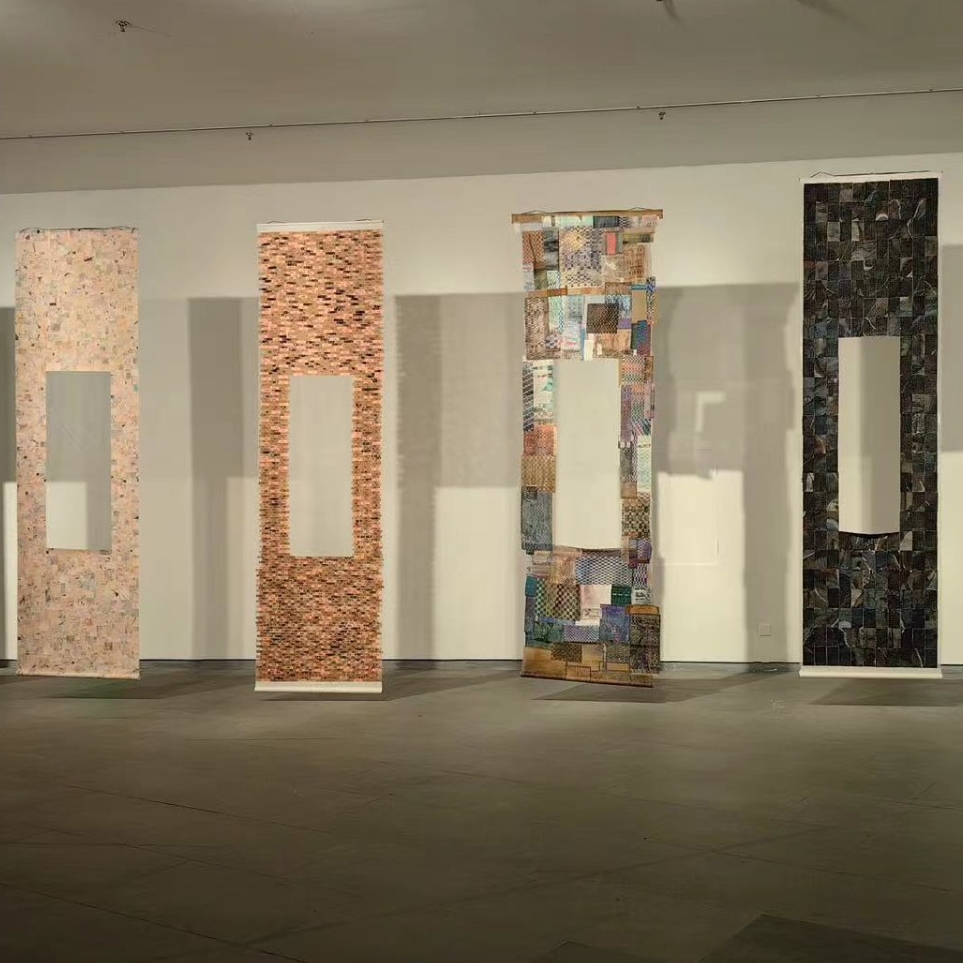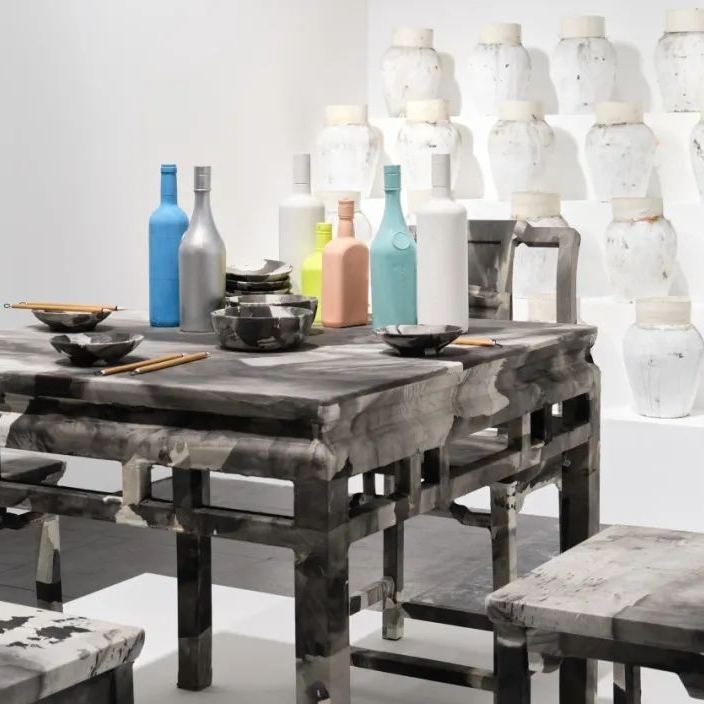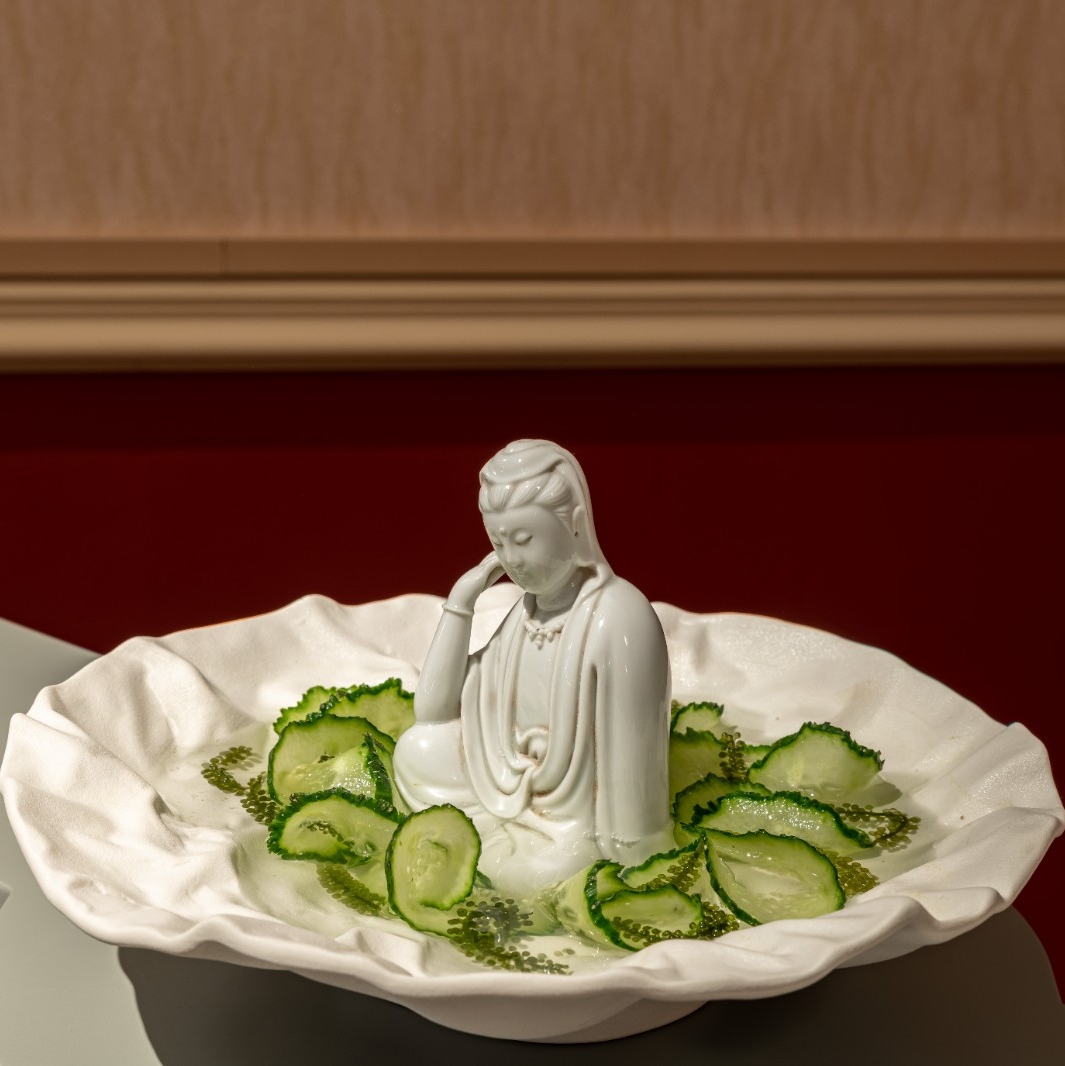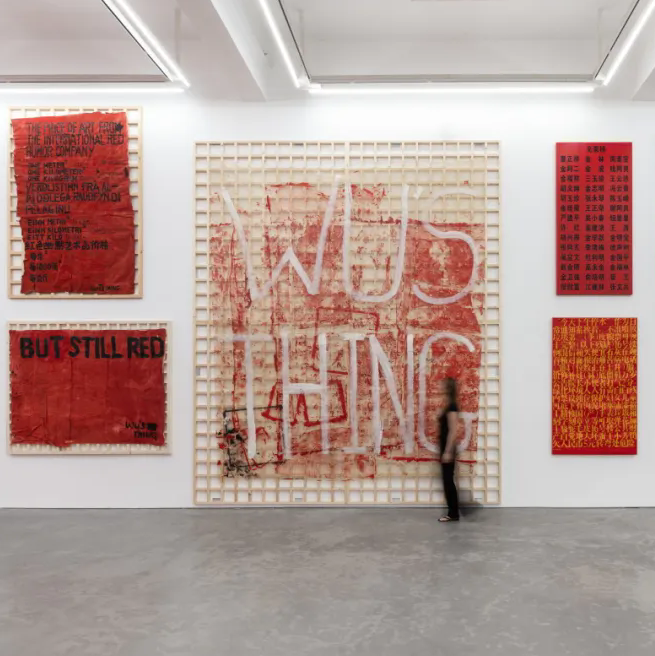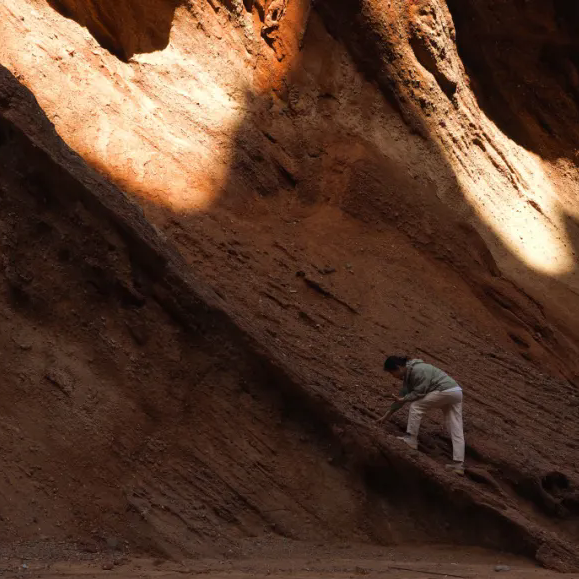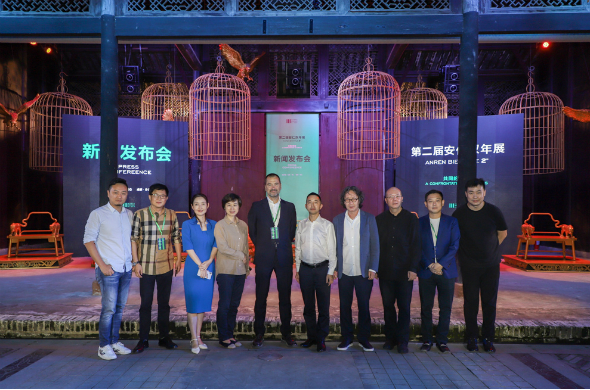
How to inject the vitality of contemporary art into an ancient town full of historical emotions, this is currently no longer a fresh attempt. Geographical differences make any similar attempt seem unique. The entry of contemporary art into the cultural ecology of ancient towns, in most cases lead to an increase in existing cultural resources. This dualistic cultural industry strategy of presentation provides a unique perspective for research in contemporary art.
Regional and Biennale Models
Regionalism as an increasingly prominent element of a biennale has become the unique temperament of the biennale, which has also made the biennale become a prey for commercial spies. A mature and well-known biennale has already created a huge influence and has become a potential space for commercial development. The Documenta in Kassel abandons the light touch of business with a serious academic attitude; the Venice Biennale creates the most enjoyable artistic dreams while accepting the shackles of business; the Japanese Echigo-Tsumari Art Triennale, awakens the country with art, which also serves as the most nutritious fertilizer to heal the earth.
If looking back at art biennales in China, the first biennale that took place in China was “Guangzhou Art Biennale (oil painting) in the 1990s” in 1992. Since then, with the development of art in China for over 30 years, the biennale model has become the most important driving force and method for the development of Chinese contemporary art.
China is not the pioneer of the biennale model, but it strives to be the biggest user of this model. Different historical situations have endowed different epochal routes, and regional choice has become the most advanced thinking of the Chinese biennale. The opening of biennales from the first-tier cities such as Guangzhou, Shanghai and Beijing show that the art of urban selection has become a feature of the early biennales. However, the urban culture sentiment which is too homogenous makes the biennales gradually lose their new provocation to the public. Perhaps a city’s capital magic makes art a tool that is readily available for commercial promotion, and it is difficult for the public to concentrate on art. Regional advantages have gradually subsided in the development of the China urban biennales, which have led to the glamour of urban biennales gradually disappearing.
When the paces of cities slow down, ancient towns and villages become another option for art exhibitions. When cities gradually lose their unique geographical advantages, ancient towns which are full of rich cultural and historical emotions, pleasant regional environments become particularly prominent choices favored by tired urban people. The Wuzhen contemporary art exhibition mode, combined with the strong advantage of the cultural resources and the vitality of contemporary art, also provides more space for commercial operations. A benign art exhibition model will allow commercial modes to swim freely while also suppressing negative business practices.
Could the Anren Biennale Recreate the Myth?
Any successful art model will quickly attract the attention of scholars and businessmen. From the Wuzhen model to the Anren Biennale is an imitation of successful experiences. The non-replica of Wuzhen area is precisely the rationality of Anren’s attempt. The non-essential features of the ancient town’s long-term brewing make the imitation traces cease to be offensive. Art has become an inspiration for the outline, which encourages the integration of business and culture, past and present, elite and public, leisure and bustling, and makes it all into a rationalized model for an art exhibition.
The Anren Biennale seems to have some unique strengths, and the confidence that culture is injected into the ancient town is extraordinarily abundant.
First of all, Anren has a unique historical and cultural resource as well as beautiful natural tourism resources. Located in the western part of the Chengdu Plain, the ancient town of Anren condenses the modern history of the western Sichuan in the past century. The ancient town has completely preserved 27 old mansions in the Ming and Qing Dynasties, 35 modern museums, sculptures of the “Rent Collection Courtyard”, Jianchuan Museum Group, and so on. Thus it is known as the “Chinese Museum Town.”
Secondly, the injection of OCT(Overseas Chinese Town)’s commercial strength, has conducted explorations in models with a sense of mission. With the support of the local government, OCT Group is looking forward to making Anren Ancient Town into a business model which also takes into account multiple interests, and on this basis, it will achieve fame and fortune. The OCT Group’s attention and promotion of Chinese contemporary art demonstrates the unique wisdom and “goodwill” of commercial capital. But without the support of funds, art may still remain in the state of primitive society. Art needs to embrace money, but it cannot sleep like a baby in arms of capital.
Thirdly, the Biennale has a professional curatorial team. The artistic level of the Anren Biennale has obtained a better artistic status after the first survey. The curatorial team does demonstrate its strong artistic resources and the Biennale features the works of Chinese and foreign contemporary artists. However, the purpose of the exhibition is not just to provide the spectators with the benefits of appreciation, but it also triggers more artistic thoughts before and after the exhibition, so that Anren becomes a place which might trigger the art of thinking.
The forthcoming Second Anren Biennale will be themed on “A CONFRONTATION OF IDEALS” to open the strategic pace of international art exhibitions at Anren. The transformation of Anren from the “old town of the Republic of China” to the “Chinese Museum Town” is also a possibility for exploration in the developments of urbanization with Chinese characteristics.
Text by Lin Lu, edited and translated by Sue/CAFA ART INFO
Photo Courtesy of the Organizer
A CONFRONTATION OF IDEALS: The Second Anren Biennale
Exhibition time: October 13, 2019 to February 12, 2020
Exhibition theme: A CONFRONTATION OF IDEALS
Co-curators: Lv(Lyu) Peng, He Guiyan, Siebe Tettero
List of Chinese Artists:
Chen Hongzhi, Chen Jieren, Chen Yujun + Chen Yufan, Fan Bo, Gao Shiqiang, Gu Xiong, Guan Huaibin, He Gong, He Jian, Hong Hao, Jiao Xingtao, Jin Jiangbo, Li Changlong, Li Yongzheng, Liu Jiakun, Liu Jianhua, Lu Zhengyuan, Miao Xiaochun, Pang Hailong, Pei Enen, Qin Ga, Qiu Anxiong, Qiu Zhijie, Ren Rong, Shi Jindian + He Duoling, Song Zhen, Sun Haili, Sun Xun, Tan Xun, Tian Xiaolei, Tong Kunniao, Wang Du, Wang Guangyi, Wu Jian’an, Wu Daxin, Wu Junyong, Xin Haizhou, Xu Bing, Xu Yibo, Xu Zhongmin, Yangdeng Art Cooperative, Yang Qian, Yuan Song, Zeng Lingxiang, Zhang Dali, Zhang Qikai, Zhang Wenzhi, Zhang Zhaoying + Shen Muyang + Yao Yao, Zhong Biao, Zhou Qinghui, Yin Chaoyang
List of International Artists:
Trevor Paglen, Carlos Motta, Sandow Birk/Elyse Pignolet, Cristina Lucas, Erkan Ozgen, Volkan Aslan, Julika Rudelius, Joep van Lieshout, Coco Fusco, Dylan Mira, Kadir van Lohuizen, Chris Jordan, Arash Nassiri, Oliviero Rainaldi, Jasmina Llobet & Luis Fernández Pons
Shared Mythology and the Conflict of Ideals:
The Second Anren Biennale
An Explanation of Themes
From 1405 to 1433, during the first century of the Ming Dynasty, the Three Treasure Eunuch Zheng He commanded Chinese flotillas on a number of voyages from Nanjing to the western coast of the Indian Ocean. On these epic journeys, the Chinese fleets visited more than thirty states, including those of Borneo, Java, Sumatra, the Philippines (Sulu), Malaya (Pahang), the Khmer, Kolkata, Siam, Bengal, Aden, Arabia, Somalia, Hormuz, and Mogadishu. The farthest destinations were East Africa and the Red Sea. These were the largest sequence of maritime expeditions in human history prior to the Age of Discovery of European mariners that began at the end of the fifteenth century. According to records, one of “Zheng He’s voyages” comprised as many as two hundred ships and twenty-seven thousand mariners. Whether or not the main purpose was to establish and consolidate a tributary system, exploration (rather than conquest, which was the main idea motivating European voyages) of previously unknown societies and the establishment of international exchanges were undoubtedly among the purposes of Zheng He’s expeditions to the “Western Ocean”.
Sixty-one years after the last treasure ship of Zheng He set sail, in 1492, the German mariner Martin Behaim collaborated with a painter to produce the world’s first globe, which he named the Erdapfel, a German word meaning “the apple of the Earth”. The globe comprised two hemispheres fashioned from linen, the periphery was reinforced with wood, and the cooperative artist hand-painted the maps that covered it. Although this globe did not include the Americas, because Columbus has not yet returned to Spain, and there were inaccuracies, such as Japan (designated by the old name Cipango) being painted to appear much larger than its actual area and its location fixed much farther south than was the case, the globe conceptually embodied a map of the Earth largely as we know it today: the vast Eurasian continent, the oceans adjoining Asia and Europe, and even St. Thomas Island. Later, Europeans reached Asia and arrived in China and Japan, signaling mankind’s entry into the early stage of globalization.
From the beginning of the sixteenth century, the Portuguese, Dutch, Spanish, and English have continuously arrived in China and, now, in today’s era of networked human globalization, different cultures and different civilizations have undergone dizzyingly profound changes, but this does not mean that mankind has yet entered a shared and integrated world.
The Second Anren Biennale draws on two historical metaphors regarding East and West to express the main themes of contemporary art in the age of globalization: In an era of complex and dramatic conflict, in which rival civilizations observe the world, how do we talk and communicate with each other? Further questions are: What do the new treasure ships in the era of globalization bring from the people of Asia to other regions of the world? And what new kind of globe can embody a new vision of humanity and an understanding of the past, present and future of human civilization? How can humanity build a shared community of civilizations that can face the challenges of the future together?
In the 1990s, Samuel Huntington was aware of the problems that exist between different civilizations. He argued that as a result of modern challenges, global politics is being reconstructed along the boundaries of culture. Peoples and countries with similar cultures come together, while peoples and countries with different cultures part ways. Alliances based on ideological and superpower relations will give way to alliances based on culture and civilization, and the redrawing of political boundaries is increasingly converging with the boundaries of culture such as race, religion, and civilization, which is replacing the Cold War camps, and the fault lines between civilizations are becoming the central boundaries in global political conflict.
As we all know, no period in world history was as complex as today and, as genetically unique and non-recurring living individuals, artists living in different national, regional, and cultural contexts necessarily perceive and express the world with differences in communication and understanding that must be elucidated through constant dialogue.
The sensitivity of artists and the richness of artistic ideas form the faces to be presented at this Biennale and, especially at a time when the world’s pattern is undergoing profound change, the voices of art will appear particularly influential and enlightening. Based on the lessons of history, art often makes valuable prophecies about the future. Huntington pointed out: A multicultural world emerged after the end of the Cold War, whereas previously the world had been largely comprised of Western countries led by the United States, socialist countries led by the Soviet Union, as well as a “Third World” which was considered poor and lacking in stability. This is certainly not to say that historical and cultural communications between different countries and regions had only just begun, but that for a considerable period of time previously the differences between the histories and cultures of various countries and nationalities were shrouded by ideological conflict and not fully presented. After the end of the Cold War, people of different background civilizations began to place issues of culture and identity on the agenda: Who are we? Where are we ultimately from? Where are we going? As a result, conceptual issues of ancestry, tradition, language, religion, history, and customs began to emerge; cultural preferences, commonalities, and differences also began to emerge. Based on the changes in the world, culture is beginning to become a more effective political strategy and communication tool. The organizational and structural abilities of culture often transcend ideology, and cultural conflicts often break through the consistency of ideology. The basic strategy of the Anren Biennale is to provide the opportunity to observe and analyze this complex and diverse world through the artist’s personal observation, as well as to enter into their dialogue with the audience, and to simulate the various interesting issues highlighted in human cultural exchanges through an aesthetic perspective.
The conflict between civilizations is based on cultural differences, so it is possible to communicate through culture and then modify the systems, economic interests and even national interests that humans have built on the basis of civilization. From a biological and philosophical point of view, conflict is inevitable, but inter-connectedness, mutual influence and even change are also all basic facts of civilization. Regardless of the type of civilization, from ancient times to the present there has never been a civilization that is unchanging. This makes it possible for us to find and present new paradigms of civilization.
Technological revolutions, political arrangements, the construction of the rule of law, and the formulation of rules are the basic guarantees for the establishment of a community among the various countries that make up the international community. Community itself is a promise of harmony and goodness, which human beings require to build the individual life they require for their development. However, different countries have different ethnicities, religious beliefs, cultural traditions, customs, and even races; in a nutshell, different national civilized backgrounds have obvious differences. At the same time, the question of the special purposes and strategies of the interests and operating groups of different countries makes it very difficult to establish a shared community and so at the same time as we formulate specific political and economic rules, we may have the opportunity to establish a civilized community by taking advantage of our discussion of values and our cultural exchanges to negotiate human ethics and indulge in the trial and error of artistic blind spots. Because of the existence of traditions and residues of civilization or culture, we can discuss how to shape a new civilization in an era of globalization suited to the human community, on the basis of respect for the history and traditions of different civilizations.
“Shared mythology” signifies the ideals, questions, and efforts required to establish a human civilized community!
Lv Peng
Wednesday, 17th April 2019
Courtesy of the Organizer


